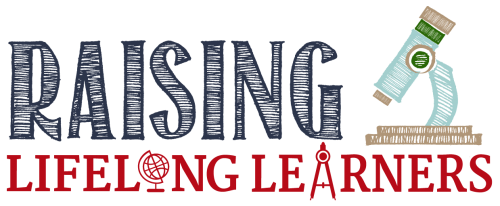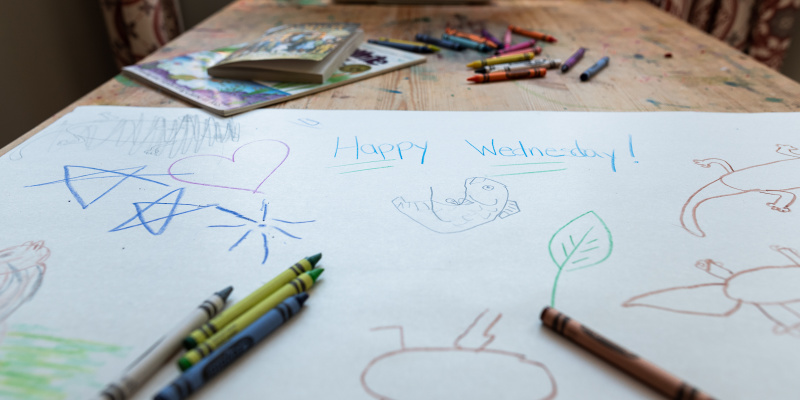Unleashing Childhood Creativity in the Homeschool Environment
Let’s face it, as we juggle homeschooling and everyday life, the picture-perfect tidy home fantasy often falls by the wayside. But is a spotless environment really the benchmark of successful home management or homeschooling?

Not at all. Instead, our homes should reflect a space of learning, loving, and, yes, living. It’s about keeping things orderly enough to function and clean enough to be healthy—beyond that, the spills and the piles of books are simply signs of a day well spent.
Clean or Creative? Find the Balance
A lived-in home is inevitable, and when we embrace this reality, we make room for more important things—like nurturing creativity in our children. Balancing cleanliness with creative opportunities means sometimes overlooking the chaos to focus on the bigger picture: raising curious and imaginative thinkers. It’s about setting realistic expectations and appreciating the unique fingerprints—sometimes literal—our kids leave on our homes.
Cultivating Creative Minds Through Unstructured Play
The importance of creativity in child development cannot be overstated. It’s critical for cognitive growth, social skills, and emotional resilience. To encourage this, it’s essential to provide children with open-ended opportunities for play and discovery. Think fort-building with blankets, backyard adventures, and art projects that may not always turn out as expected but often lead to unexpected bursts of innovation and critical thinking.
Encouraging Problem Solving and Self-Expression
Every child has a unique set of talents and interests. Whether they’re drawn to fine arts, music, debate, or any other expressive discipline, these avenues allow kids to explore complex problem-solving scenarios in creative ways. When faced with a challenging task, draw from these activities to help them approach it with agility and confidence.

Why Mess Equals Progress
It’s been said that some of the best learning happens amidst a mess. When kids engage in hands-on activities, they’re often so absorbed in their projects that clutter becomes invisible to them. And while it’s important for them to learn responsibility, including cleaning up after themselves, parents shouldn’t sweat the small stuff. After all, today’s wood chips on the floor could be tomorrow’s architectural masterpiece.
The Therapeutic Power of Creative Expression
Creative activities such as journaling or drawing can significantly help children process feelings and emotions. Not only do these creative outlets serve as emotional outlets, but they also reinforce cognitive connections across various subjects, from language arts to science.
Spaces of Imagination
Transforming parts of your home into creative spaces doesn’t have to be elaborate. A corner with art supplies, a shelf with building blocks, or a box with dress-up clothes can all become springboards for imaginative play. Don’t fret about the mess; it’s all part of the creative process and helps your children express themselves and their ideas freely.
Structured vs. Unstructured: Striking a Balance
While it’s crucial to incorporate unstructured play into daily routines to spur creativity, some structure is also necessary. As children grow, their need for structured learning may increase, but this doesn’t mean creative activities should take a back seat. Instead, adjust the balance with your child’s development and external commitments to ensure a rounded educational experience.

Curiosity Fueled by the Everyday
Fostering creativity doesn’t require elaborate tools or programs. The art of asking open-ended questions about daily experiences can significantly enhance a child’s creative thinking skills. Engaging in thought-provoking discussions helps them look at the world from different perspectives and find inventive solutions to everyday problems.
Navigating the Creative Chaos
Admittedly, fostering a creative environment is not without its hiccups. The challenge is often containing the mess without stifling the magic. Remember that a house is not a showplace; it’s a workspace for ideas, a laboratory for innovation, and most importantly, a home where memories are made.
As homeschooling parents, we know that learning is not confined within the walls of a traditional classroom or the pages of a textbook. It spills across every corner of our homes and lives. Letting creativity blossom may mean a little more disorder and a few more spills, but it also means watching our kids flourish in an environment that values and encourages their unique talents and perspectives.
Remember, you’re not just teaching your kids; you’re raising lifelong learners. The mess can wait, but their imaginations are blooming right now. Let’s roll up our sleeves and nurture the seeds of creativity that will grow well beyond the walls of our perfectly imperfect homes.
RLL #229: Unleashing Childhood Creativity in the Homeschool Environment
As parents and educators, fostering creativity in our children can sometimes feel like an uphill battle against the onslaught of daily life, especially when homeschooling collides with keeping the house, working, and all the other things a busy parent needs to juggle.
But, there is hope, and today’s episode provides practical insights and encouragement for cultivating a thriving creative environment.
We delve into embracing a lived-in home and the benefits of prioritizing creativity to a child’s development. Plus, we look ahead to the influences this may have on their future paths.
Episode key takeaways include:
- Promoting Creativity Over Perfection: Accepting that a lived-in home is part of a family’s creative journey is central to nurturing innovation and cognitive growth in our children.
- Diverse Expressions of Creativity: Creativity goes beyond arts and crafts—it’s about problem-solving, imaginative play, critical thinking, and encouraging each child’s unique talents.
- Encouraging Curiosity and Resilience: By focusing on a child’s strengths and interests, we prepare them for challenges ahead, helping them develop the resilience and agility necessary for future success.
Dive into the discussion on how we can foster creativity, and don’t miss Colleen’s powerful example of how her daughter’s artistic challenges turned into an opportunity for creative problem-solving.
Links and Resources from Today’s Show
- SPONSOR | CTC Math
- SPONSOR | Night ZooKeeper
- Raising Lifelong Learners Membership Community – The Learners Lab
- Raising Resilient Sons by Colleen Kessler, M.Ed.
- The Different Faces of Giftedness: Understanding Your Child
- Raising Creative Kids: A Collection of Simple Creativity Prompts for Children
- Real-Life Science Mysteries Book
- Falling Unexpectedly in Love With Homeschooling My Gifted Child
- The Best Advice I Can Give You: Become A Student Of Your Child
- Inspiring Creativity in Kids
- Sparking Creativity with Dragons and Netflix
- Hands-On Art History–Discovery through Creativity
- Learning with Spielgaben | Play-Based Problem-Solving
- Inspire Creativity with LEGO and Netflix
- Creativity Means Dreaming Big
- Raising Problem Solvers
- Creative Thinking Activities for Kids
- How to Encourage Innovative Thinking in Your Kids
- Q-Tip Snowflake STEM
- Snowflake STEM Bundle
Leave a Rating or Review
Doing so helps me get the word out about the podcast. iTunes bases their search results on positive ratings, so it really does help — and it’s easy!
-
- Click THIS link to go to the podcast main page.
- Click on View in iTunes under the podcast cover artwork.
- Once your iTunes has launched and you are on the podcast page, click on Ratings and Review under the podcast name. There you can leave either or both! Thanks so much.

